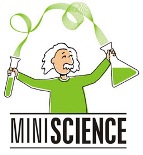 "Mini-Science 2016: Weather and climate - going to extremes"
"Mini-Science 2016: Weather and climate - going to extremes"
Thursday evenings, from February 25 to April 14, 2016.
About the readings: Some of the readings below are articles in scholarly journals. You may enjoy reading just the abstract, or other portions of the article such as the conclusion or discussion. We will print some of the shorter readings (up to 10 pages in length) to complement each week’s Mini-Science presentation with background information. The longer, more technical readings will only be available online.
To find out more about Mini-Science 2016, please start at our Mini-Science homepage. Registration is now closed.
The lectures from Mini-Science 2016 are now available as webcasts (YouTube videos) and also as television broadcasts (Canal Savoir).
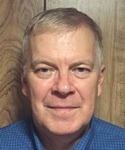
How weather and climate work (February 25, 2016)
Prof. John Gyakum, Department of Atmospheric & Oceanic Sciences
Synopsis
“Weather is what you get; climate is what you expect.” This oft-used expression is the launch for our discussion of defining weather and climate. We provide examples of extreme weather, examine how they occur, and explore the questions and issues that link them to global climate variability.
Readings and links
- Weather & Climate, a brochure from the National Weather Service (USA).
- Extreme Weather, from The National Climate Assessment (USA)
- Overview of Climate Change in Canada, from Natural Resources Canada
- Report on the Symposium on Extreme Weather: Impacts, Challenges and Adaptations, from the Canadian Climate Forum
About the speaker
John Gyakum is the Canada Steamship Lines Professor and Chair of the Department of Atmospheric and Oceanic Sciences at McGill University. Since receiving his Ph.D. from MIT in 1981, he has published more than 100 refereed papers, and has supervised more than 50 graduate students. His recent research focuses on the dynamic and thermodynamic processes associated with extreme mid-latitude storms and rainfalls, freezing rain in the Saint Lawrence River Valley, transitions of hurricanes into extratropical cyclones and their meteorological impacts on Canada, Arctic air mass formation, Arctic cyclogenesis, and blocking. From 1998 to 2003, he served as Editor for the Monthly Weather Review, the world’s leading journal that focuses on weather analysis and forecasting. From 2012 to 2015, he served on the US Climate Variability (CLIVAR) working group on temperature extremes. He is one of Canada’s leading experts on extreme weather processes. He is a Fellow of the Canadian Meteorological and Oceanographic Society, and of the American Meteorological Society.
Questions and answers
At the conclusion of each Mini-Science lecture, audience members submit their questions to the evening's presenter. Here are some of these questions and answers from Professor Gyakum's presentation.
- Q: Can you please tell us about the effects of the changing locations of Hadley cells in the atmosphere?
- A: To start, the Hadley cells generally migrate seasonally with the sun. In other words, the Hadley Cell's rising motion region (the inter-tropical convergence zone) is typically located near the equator during equinoxes (approximately March 21 and September 21), and at about 20 degrees latitude South during the December solstice and at about 20 degrees latitude North during the June solstice. The actual width of the Hadley cells is typically about 30 degrees of latitude, both northward and southward of the inter-tropical convergence zone. Nevertheless, there is a substantial amount of both longitudinal (east-west) variability, and inter-annual variability of both the Hadley cell's location and width. This variability has much to do with where regions of rain and very dry conditions occur. Furthermore, there is some evidence to suggest that the Hadley's cell's width is actually increasing with climate change. This climate-change effect is to alter the locations of where the rainy and dry regions are located.
- Q: Please clarify what the media mean when they announce that the temperature today is below "normal" when it seems that they really mean that a daily temperature is just "below average" for that day but still within the expected temperature variability for that season.
- A: This is a really great question. The concept of temperature variability needs to be cast in the context of the expected variability for a location and also for the season. For example, if a particular daily temperature mean for Montreal in February happens to be one degree C above the climatological mean, then so what? This anomaly happens to be well within the expected range of variability. If, on the other hand, the particular daily temperature mean for Montreal happens to be 15 degrees C above the climatological mean, that is quite significant. Therefore, it would make much more sense for the media to indicate whether the temperature is expected to be, say, one or two standard deviations above or below the climatological mean. These would be relatively low probability events that would represent genuine extremes of temperature. So, I would suggest that a 'below average' temperature be so defined when that temperature anomaly reaches a threshold value of one full standard deviation. That standard would recognize the climatological temperature variability for the time of year, and for the particular station.
No lecture (March 3, 2016)
McGill Reading Week
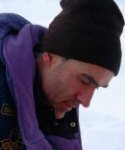 Arctic climate change: Observations, future projections and possible restoration strategies (March 10, 2016)
Arctic climate change: Observations, future projections and possible restoration strategies (March 10, 2016)

Prof. Bruno Tremblay, Department of Atmospheric & Oceanic Sciences
Synopsis
The challenge of controlling, managing, or possibly reversing the impacts of human activities on our planet has an increasingly visible other dimension that has been given little attention, i.e., the actions of a stakeholder community whose interests lie with “business as usual” or that hopes to benefit from environmental change. These issues are playing out now in the Arctic, as it shifts from white, ice-bound, to a seasonally ice free, blue, and resource-accessible state. There are many environmental, socioeconomic and sociocultural arguments for restoring and sustaining a year-round, ice-covered white Arctic. At the same time, there are growing interests in the opening up of a blue Arctic Ocean. In this presentation, we will review recent changes in Arctic sea ice cover, possible causes for the rapid changes that are presently occurring in the Arctic and timescales (political, technological and physical) for the potential restoration of sea ice.
Readings and links
"Future abrupt reductions in the summer Arctic sea ice." Marika M. Holland , Cecilia M. Bitz , Bruno Tremblay. Geophysical Research Letters, Volume 33, Issue 23, December 2006. DOI: 10.1029/2006GL028024
About the speaker
Bruno Tremblay is a Professor in McGill’s Department of Atmospheric and Oceanic Sciences. Professor Tremblay’s research focuses on high latitude climate change, with special emphasis on the future of the sea ice cover in a warming world. His work focuses on modeling, analysis of global climate models and satellite data, and field work. Professor Tremblay is involved in the Canadian ArcticNet mooring deployment program and the Canadian Arctic Buoy Program. His research is funded by the Office of Naval Research, the National Science Foundation, the Natural Science and Engineering Research Council of Canada and ArcticNet, among others. His recent collaborations on Rapid Decline in Summer Arctic Sea Ice and The Last Ice Area, garnered national and international media coverage from CBC News, Radio-Canada, The New York Times, Le Monde, and National Geographic, to name just a few. He has received several scientific awards and honours including the Stroke Doherty Lectureship from Columbia University and the National Oceanic and Atmospheric Administration Postdoctoral Fellowship in Climate and Global Change. Tremblay was an editor at the Journal of Geophysical Research – Oceans.
Questions and answers
At the conclusion of each Mini-Science lecture, audience members submit their questions to the evening's presenter. Here are some of these questions and answers from Professor Tremblay's presentation.
- Q: Rather than carbon sequestration what advantage is possible through conversion of C02 into carbon nanofibers and 02 as per Jiawen Ren at al., of George Washington University? This seems promising, but are there enough applications for the new carbon nanofiber that it could make a difference?
- A: I am not an expert on this question. In the article they state that concrete (among other materials) could be replaced by carbon nanofibers. Concrete production is one of the primary producers of CO2. So in principle if carbon nanofibers could replace all concrete and if it could be produced using renewable energy sources, then this could be significant.
- Q: What do you think of carbon sequestration into liquid fuels as a way to stop adding carbon to the atmosphere?
- A: I am aware of carbon capture (of CO2) directly at power plants and later sequestration of the CO2 in geological features where it will not re-enter the atmosphere. I am not aware of carbon sequestration into liquid fuel; CO2 is a by-product of fossil fuel burning, not a fuel itself. If the author wants to direct me to a link where this is discussed, I can comment more in depth.
- Q: In India, a project to avoid solar-energy power plants was blocked by the World Trade Organization because to build the solar power plants, India didn’t import any foreign goods. How can we change this?
- A: Some news outlet (e.g., HuffPost) did not get the story straight. The complaint from the US was that India was forcing buyers of the solar panels to make sure that the panels were made in India. I am guessing here that other countries such as China and USA may produce the same panel cheaper. The WTO rules do indeed state that you cannot make laws that favour domestic over imports without having a very good reason (and creating a new manufacturing base in one's country is not a good enough reason). So this is not a ruling that India cannot invest in solar — but rather that when they do so, they have to allow foreign firms to compete. This will have much less impact than the HuffPost author fears.
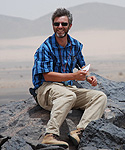 Deep time climate change (March 17, 2016)
Deep time climate change (March 17, 2016)

Prof. Galen Halverson, Department of Earth & Planetary Sciences
Synopsis
Between 720 and 635 million years ago, Earth descended into a pair of glaciations so severe virtually the entire surface of the globe froze over and remained frozen for millions of years. These glaciations occurred at a time of extraordinary changes in Earth’s environment, as a supercontinent broke apart, oxygen first permeated the oceans, and eukaryotes became established in the biosphere. This lecture will present geological evidence for the severity of these glaciations, climatic models to explain them, and discuss their potential causes and effects on the rapidly evolving environment of that epoch. Although it is unlikely that another snowball Earth event will occur, these climatic disasters in Earth’s ancient history provide valuable lessons on the behaviour of the Earth system.
Readings and links
- "Fossil Freeway." The attractive illustrated chart on this webpage will help you visualise and remember the chronology of different geologic eras, such as the Holocene, Cretaceous, Jurassic, etc.
- "Orbitally forced ice sheet fluctuations during the Marinoan Snowball Earth glaciation." Douglas I. Benn, Guillaume Le Hir, Huiming Bao, Yannick Donnadieu, Christophe Dumas, Edward J. Fleming, Michael J. Hambrey, Emily A. McMillan, Michael S. Petronis, Gilles Ramstein, Carl T. E. Stevenson, Peter M. Wynn & Ian J. Fairchild. Nature Geoscience 8, 704–707 (2015) DOI: 10.1038/ngeo2502
- "A 'snowball Earth' climate triggered by continental break-up through changes in runoff." Donnadieu, Y., Goddéris, Y., Ramstein, G., Nédélec, A., Meert, J. Nature 428, 303–306 (18 March 2004). DOI: 10.1038/nature02408.
- "Neoproterozoic biotic diversification: Snowball Earth or aftermath of the Acraman impact?" Kathleen Grey, Malcolm R. Walter, and Clive R. Calver. Geology, v. 31 no. 5 p. 459-462. DOI: 10.1130/0091-7613(2003)031<0459:NBDSEO>2.0.CO;2
About the speaker
Galen Halverson has been the T.H. Clark Chair of Sedimentology and Petroleum Geology at McGill University, since 2010. Professor Halverson’s expertise lies in sedimentology and isotope geochemistry, which he applies to understanding the evolution of Earth’s environment in deep time. His field research has taken him to locations across the globe, from Antarctica to Africa, and from Australia to the Arabian Peninsula. Galen completed his Ph.D. at Harvard University, working with geologist Paul Hoffman on the causes and consequences of global glaciations (snowball Earth events), which occurred just prior to the first appearance of animals in the geological record some 650 million years ago. Following his Ph.D., Galen spent two years as a post-doc at the University of Toulouse III in France, learning to apply the novel technique of non-traditional metal isotopes to deciphering biogeochemical signatures in the sedimentary record. Afterwards, he spent three years as a lecturer at the University of Adelaide and recently returned from a sabbatical year in Perth. Galen currently carries out much of his field research in northern Canada, investigating North America’s break-out from the supercontinent Rodinia and the interconnections between tectonics, climate, ocean chemistry, and the biosphere.

Climate change and preserving cold carbon (March 24, 2016)
Prof. Nigel Roulet, Department of Geography
Synopsis
The countries participating in COP21 in Paris, December 2015 agreed to take steps to emissions so that the global mean annual temperature increase would not be more than 2ºC of the pre-industrial mean. To accomplish this goal there needs to be a massive (> 50%) and rapid (< 50 years) reduction in greenhouse gas emissions. The most recent 2015 global carbon budget released by the Global Carbon Project shows emissions of CO2 have increased little over 2014 and 2015. The same report indicated that 90% of the CO2 emissions are from fossil fuels while 10% is due to CO2 release during land-use change. Most people focus on reducing fossil fuel emissions to obtain our climate objectives, but we will also have to reduce the source of greenhouse gases that come from land-use change. Until now most land-use change has been in the temperate and tropical regions and in the conversion of forests to agriculture. However, well over 40% of all terrestrial carbon still remains in relatively undisturbed ecosystems in Boreal, Subarctic and Arctic regions. The necessity is clear — we cannot afford to duplicate the emissions of greenhouse gases from land-use change that have occurred over the past 100 years, for the next 100 years and maintain global temperature increases below 2ºC. We have the knowledge and hopefully the awareness to develop innovative strategies and safeguards to sustain land carbon storage.
Readings
- "Conserving the World's Last Great Forest is Possible: Here's How." A report from the International Boreal Conservation Science Panel (July 2013)
- "The Northern Circumpolar Soil Carbon Database version 2 (NCSCDv2)", a spatial dataset created for the purpose of quantifying storage of organic carbon in soils of the northern circumpolar permafrost region. (Bolin Centre, Stockholm University)
- "Climate change and the permafrost carbon feedback." E.A.G. Schuur, A.D. McGuire, C. Schädel, G. Grosse, J.W. Harden, D.J. Hayes, G. Hugelius, C.D. Koven, P. Kuhry, D.M. Lawrence, S.M. Natali, D. Olefeldt, V.E. Romanovsky, K. Schaefer, M.R. Turetsky, C.C. Treat & J.E. Vonk. Nature 520, 171–179 (09 April 2015). DOI: 10.1038/nature14338
About the speaker
Prof. Nigel T. Roulet is a James McGill Professor of Biogeosciences in the Department of Geography. He obtained a Joint Honours B.Sc. in Biology and Geography (1979) and a M.Sc. in Watershed Science (1981) from Trent University, Peterborough, Ontario, and his Ph.D. in Physical Geography with a specialization in hydrology from McMaster University, Hamilton, Ontario. He started his academic career in the Department of Geography at York University, Toronto in 1985 and moved to McGill University in 1994. He was the Director of the McGill School of Environment from 2003 to June 2008 and the Director of the Centre for Climate and Global Change Research at McGill University from 1996 — 2002 and the Director of the Global Environmental and Climate Change Research Centre at McGill University 2011 — 2014. Professor Roulet has been Chair of the Department of Geography at McGill since 2014. He was a Group Chair of the Geosciences for the Natural Sciences and Engineering Research Council of Canada’s Discovery Grants and Scholarships program and currently serves on the NSERC Vanier Scholarship Committee. His research interests focus on the interactions among hydrology, climatology, and ecosystems processes in peatlands and forested catchments of the temperate, boreal, and arctic regions. He has published over 170 scientific papers, book chapters and monographs and was a contributing author to the 2nd through 4th scientific assessments of climate change by the United Nation’s Intergovernmental Panel on Climate Change. Professor Roulet recently served as a member of the Ontario Far North Act Science Advisory Panel (2008-2010). He is currently an Associate Editor of Global Biogeochemical Cycles and Hydrological Processes, is a frequent guest editor of PNAS, and has been an associate editor of Wetlands and the Journal of Geophysical Research – Biogeosciences. In November 2014, Nigel was inducted as a member of the Academy of Science, Royal Society of Canada.
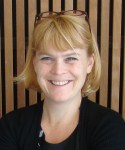 How can we adapt to climate change? (March 31, 2016)
How can we adapt to climate change? (March 31, 2016)

Prof. Lea Berrang Ford, Department of Geography
Synopsis
It is now widely accepted that the global climate is changing and that societies will need to adapt. In addition to efforts to reduce global emissions, adapting to existing and future impacts represents a grand challenge this century. Indeed, global funds to support adaptation have begun to be disbursed, with $20-64 billion in fast-tracked funding already being invested. This will increase to $100 billion annually by 2020, as per the 2015 Paris Agreement. Canada is among the largest adaptation donors to these funds. This growth in global finance for adaptation underscores the urgency with which to understand how and where adaptation is needed and is feasible, and monitor the use of adaptation funds. Are we adapting, to what, and how? This presentation will explore the challenge of global human adaptation to climate change, and explore efforts and opportunities to systematically track and evaluate progress on adaptation policy and practice.
Readings
- "Adaptation tracking for a post-2015 climate agreement." J.D. Ford, L. Berrang-Ford, R. Biesbroek, M. Araos, S.E. Austin and A. Lesnikowski. Nature Climate Change 5:967-69 (23 October 2015). DOI: 10.1038/nclimate2744
- "National-level progress on adaptation." Alexandra Lesnikowski, James Ford, Robbert Biesbroek, Lea Berrang-Ford & S. Jody Heymann. Nature Climate Change (09 November 2015 ). DOI: 10.1038/nclimate2863
About the speaker
Lea Berrang Ford is an Associate Professor in the Department of Geography at McGill and a former Trottier Fellow in Science and Public Policy. She specializes in environmental health and the development of novel metrics for global climate adaptation policy. Professor Berrang Ford holds a Ph.D. in Epidemiology from the University of Guelph, an M.Sc. in Environmental Change from Oxford University, and a B.Sc. (Env.) in Environmental Geography from the University of Guelph. Professor Berrang Ford draws on her background in epidemiology and geography to translate and integrate quantitative and qualitative tools for study design and analysis for adaptation tracking. She is a co-founder of TRAC3: Tracking Adaptation to Climate Change Consortium, and co-leads the Indigenous Health Adaptation to Climate Change project in the Canadian Inuit north, the Peruvian Amazon, and southwestern Uganda. She is the co-editor of the book Adaptation in Developed Nations: from Theory to Practice, and her research on climate change adaptation is widely cited in the Intergovernmental Panel on Climate Change (IPCC) 5th Assessment Report (WGII, 2014).
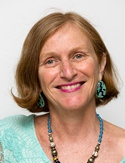 Climate change and the tropics (April 7, 2016)
Climate change and the tropics (April 7, 2016)

Prof. Catherine Potvin, Department of Biology
Synopsis
Canada has repeatedly missed its greenhouse gas emissions reduction targets and failed to take significant action to address climate change. The election of a new federal government, the decision of Alberta’s government to tackle climate change and the collaboration between Quebec and Ontario might substantially change Canada’s positioning on climate change. In the context of this possible transition towards a low-carbon economy, Professor Potvin will present ten key policy orientations that could allow Canada to engage in the transition towards a low-carbon economy were identified and will be presented and discussed. These policy orientations have been agreed upon by more than sixty Canadian scholars from across the country, with disciplinary backgrounds ranging from engineering and business to biology and sociology, who collaborated to produce a consensus on science-based, viable solutions.
Readings
- "Acting on Climate Change: Solutions from Canadian Scholars" — Summary, Position paper
- "Acting on Climate Change: Extending the Dialogue Among Canadians" — Short document. Full document
About the speaker
Catherine Potvin obtained her Ph.D. from Duke University, North Carolina, and since then has always worked on issues related to global climate change. She is a Professor in the Department of Biology at McGill University in Montreal where she holds the Canada Research Chair on Climate Change Mitigation and Tropical Forest (Tier 1), and is also a Fellow of the Royal Society of Canada. She has worked with the Embera people of Panama since 1994 which helped her develop participatory approaches to integrate the human dimension in biological analysis. Her current research in Panama spans a broad range of issues from remote sensing to capacity building and conflict resolution, the unifying theme being forest conservation and climate change. Professor Potvin has edited two books and published over 100 scientific journal articles or book chapters. She served as Panama’s negotiator of REDD in the U.N. Framework Convention on Climate Change (2005-2009). She is currently leading the Sustainable Canada Dialogues, an initiative that mobilizes scholars from across Canada to propose a blueprint for Canada’s transition to a low-carbon economy.
 Air pollution, climate and health in the Tibetan Plateau (April 14, 2016)
Air pollution, climate and health in the Tibetan Plateau (April 14, 2016)

Prof. Jill Baumgartner, Institute for Health and Social Policy & Department of Epidemiology, Biostatistics & Occupational Health
Synopsis
Almost half the world’s population, primarily in developing countries, cooks and heats their homes with highly-polluting biomass and coal fuels in traditional stoves. The resulting air pollution is a major anthropogenic source of regional air pollution and leading contributor to respiratory and cardiovascular diseases. Mountainous regions like the Tibetan Plateau are particularly vulnerable to the environmental and climate impacts of air pollution from biomass and coal burning. I will present information air pollution and cardiovascular health that we have collected over the past several years in villages on the eastern edge of the Tibetan Plateau where burned biomass in traditional stoves for cooking and heating. I will also discuss our work investigating the climate and environmental impacts of traditional stoves use and use of cleaner-burning stoves and fuels in this vulnerable region of the world.
Readings and links
- "Highway proximity and black carbon from cookstoves as a risk factor for higher blood pressure in rural China." Jill Baumgartner, Yuanxun Zhang, James J. Schauer, Wei Huang, Yuqin Wang, and Majid Ezzati. Proceedings of the National Academy of Sciences of the United States of America (PNAS), vol. 111 no. 36 13229-13234 (September 9, 2014). DOI: 10.1073/pnas.1317176111
- "Current debates and future research needs in the clean cookstove sector." Gregory L. Simon, Rob Bailis, Jill Baumgartner, Jasmine Hyman, Arthur Laurent. Energy for Sustainable Development, Volume 20, June 2014, Pages 49–57. DOI:10.1016/j.esd.2014.02.006
- "Reducing CVD Through Improvements in Household Energy: Implications for Policy-Relevant Research." Jill Baumgartner, Kirk R. Smith, Arun Chockalingam. Global Heart, Volume 7, Issue 3, September 2012, Pages 243–247. DOI: 10.1016/j.gheart.2012.06.018
About the speaker
Jill Baumgartner is an Assistant Professor in the Institute for Health and Social Policy and the Department of Epidemiology, Biostatistics & Occupational Health at McGill University. She also is an Associate Member of the McGill School of Environment. Professor Baumgartner studies exposure to environmental pollutants and their affect on human health in the context of urbanization and development. She holds a joint Ph.D. in Population Health Sciences and Environment & Resources from the University of Wisconsin-Madison and a Masters in Population and International Health from Harvard University. She was a Global Renewable Energy Leadership Fellow at the Institute on the Environment (University of Minnesota) from 2011-2013 and a visiting researcher at Tsinghua University in 2012.
To register for the series, or to find out more about Mini-Science 2016, please start at our Mini-Science homepage.